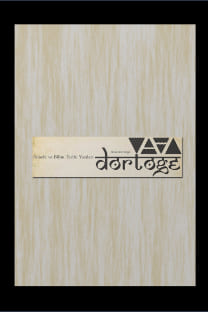Schopenhauer Felsefesinde ‘Ölüm’ ve ‘Ölüm Korkusu’ Üzerine
İstenç, Tasarım, Yaşama-İstenci, Istırap, Ölüm
On Death and The Fear of Death in the Philosophy of Schopenhauer
Will, Represantation, Will-to-Life, Suffering, Death,
___
- Cevizci, A. (1996). Felsefe Sözlüğü. Ankara:Ekin.
- Durant,W. (2009). Felsefenin Öyküsü. E. Gürol (Çev.). İstanbul:İz.
- Gökberk, M. (2010). Felsefe Tarihi. İstanbul: Remzi.
- Janaway, C. (2007). Schopenhauer. R. Ç. Ataman (Çev.). İstanbul:Altın.
- Jones,W. T. (1975). Kant & The Nineteeth Century. New York: Harcourt Brace Jovanovich, Inc.
- Kuçuradi, İ. (2006). Schopenhauer ve İnsan. Ankara: Türkiye Felsefe Kurumu.
- Sans, E. (2006). Schopenhauer. I. Ergüden (Çev.). Ankara: Dost.
- Schopenhauer, A. (2005). İsteme ve Tasarım Olarak Dünya. L. Özşar (Çev.). Bursa: Biblos.
- Schopenhauer, A. (2012). Hayatın Anlamı. A. Aydoğan (Çev.). İstanbul: Say.
- Schopenhauer, A. (2013). İnsan Doğası Üzerine. E. Yıldırım (Çev.). İstanbul: Roman.
- Schopenhauer, A. (2017). Ölüm Ve İçsel Doğamızın Yok Edilemezliği İle Olan İlişkisi. E. Yıldırım (Çev.). İstanbul: Roman.
- Scruton, R. (2015). Modern Felsefenin Kısa Tarihi. U. Özmakas, Ü. H. Yolsal (Çev.). Ankara: Dipnot.
- Tsanoff, R. A. (2009). Schopenhauer’un Kant’ın Tecrübe Teorisine Eleştirisi. Schopenhauer. A. Aydoğan (Yay. Haz.). İstanbul: Say.
- Warburton, N. (2016). Klasiklerle Felsefe. A. Fethi (Çev.). İstanbul: Alfa.
- ISSN: 2146-7064
- Yayın Aralığı: Yılda 2 Sayı
- Başlangıç: 2012
- Yayıncı: Nobel Akademik Yayıncılık
İshak Hoca’nın Mecmûa-i Ulûm-i Riyaziye’sinde Saatler Bahsi
Saatler BAHSİ, Melek DOSAY GÖKDOĞAN
Duyu-Verisi Kuramının Adverbial Eleştirisi
Bilimsel Açıklamanın Felsefi Temelleri Bağlamında Aristoteles’in Dört Neden Kuramı
Felsefi Eylem Olarak Yazma ve Konuşma İlişkisi
Mehmet Ali DOMBAYCI, Salime Gülay DOĞRU
Tercüme-i Nasâyih-i Eflâtûn-ı İlâhî Üzerine Notlar
Thomas LEPELTİER, Bihter TÜRKMENOĞLU
Schopenhauer Felsefesinde ‘Ölüm’ ve ‘Ölüm Korkusu’ Üzerine
Hüseyin Rahmi Gürpınar’ın Eserlerinde Bilimsel ve Felsefi Unsurlar
Evrim KURAMI, Hüseyin Rahmi Gürpınarın Eserlerinde, Doğanay ERYILMAZ, İnan KALAYCIOĞULLARI
Hüseyin Rahmi Gürpınar’ın Eserlerinde Bilimsel ve Felsefi Unsurlar
Evrim KURAMI, Hüseyin Rahmi Gürpınarın Eserlerinde, Doğanay ERYILMAZ, İnan KALAYCIOĞULLARI
